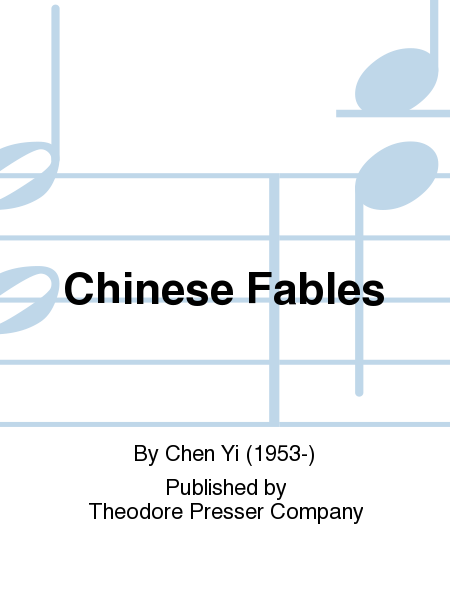Details
Description
SKU: PR.114411920
Composed by Chen Yi. Set of Score and Parts. With Standard notation. Composed 2002. 31+12+12+12+12+10 pages. Duration 13 minutes. Theodore Presser Company #114-41192. Published by Theodore Presser Company (PR.114411920).UPC: 680160017270. 8.5 x 11 inches.
In the first movement, "The Fox Profited by the Tiger's Might", the erhu and the pipa represent the flaunting fox who borrows the tiger's fierceness by walking in the latter's company, while the cello and the percussion in low register support the image of the tiger. In the second movement Master Dong-guo and the Wolf, the cello and the erhu represent the softhearted scholar Dong-guo, who narrowly escaped being eaten by a wolf which he had helped to hide from a hunter. The pipa sounds sometimes charming and sometimes aggressive, representing the cunning and the savage wolf. In the third movement, "The Snipe and the Clam", Chen Yi features the percussion's high register in the texture made by all other instruments, to imagine the grapple scene between the snipe and the clam.
It’s most inspiring when I learnt some of the most popular Chinese fables in my childhood.. They are vivid and humorous, full of imagination, yet so profound in their logic. I used a mixed Chinese and western instrument ensemble, including two bowing and one plucking instruments, with a group of percussion, to express my impressions of three favorite stories.In the first movement, The Fox Profited by the Tiger’s Might, I used the erhu and pipa to represent the flaunting fox who borrows the tiger’s fierceness by walking in the latter’s company, while the cello and percussion in low register support the image of the tiger.In the second movement, Master Dong Guo and the Wolf, I used the cello and the erhu to represent the soft-hearted scholar Dong Guo who narrowly escaped being eaten by a wolf whom had helped hide from a hunter. The pipa’s sound is sometimes charming and at times aggressive, reflecting the cunning of the savage wolf.The third movement, The Snipe and the Clam, features the percussion’s high register in a texture formed by the other instruments to imagine a grappling scene between the snipe and the clam, caught in each other’s jaw bite. “If it doesn’t rain today or tomorrow,” said the snipe, “there will be a dead clam lying here.” “If it doesn’t set you free today or tomorrow,” retorted the clam, “there will be a dead snipe here too.” As neither would give way, a fisherman came and caught them both.—Chen Yi“…the most immediately striking work on the program…uses instrumental timbres to represent characters (usually animals, as in “The Fox Profited by the Tiger’s Might”) but not in a superficially illustrative way. Ms. Chen’s writing is energetic and thoughtfully shaped, and deftly conveyed the intensity of these small dramas.”—Allan Kozinn, New York Times, November 10, 2004.

 Share
Share